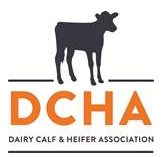
 Cross-sucking among dairy heifers can occur both before and after weaning. However, it is most often seen during the 10 to 15 minutes immediately following milk feeding of pre-weaned calves.
Cross-sucking among dairy heifers can occur both before and after weaning. However, it is most often seen during the 10 to 15 minutes immediately following milk feeding of pre-weaned calves.The impact of cross-sucking on heifer mastitis makes it an important issue to monitor on your operation. A March 2012 Journal of Dairy Science article lists control of cross-sucking as one of 10 farm-specific interventions that should be in place on any farm to prevent and control heifer mastitis.
Sam Leadley, calf management specialist with Attica Veterinary Associates in western New York, discussed ways to control cross-sucking in calves and heifers in his September Calving Ease newsletter.
"Cross-sucking is considered abnormal behavior," Leadley writes. "It is not observed in calf-dam pairs."
Here are some practices that can help minimize this behavior:
- House calves individually rather than in groups.
- In a group-housing system, use headlocks at feeding stations and keep calves restrained for 10 to 15 minutes after milk feeding.
- Regardless of feeding method (mob vs. ad lib acidified vs. automatic) the availability of a teat to suck on can reduce cross-sucking.
- Observe calves frequently, watching for repetitive behavior to identify calves exhibiting cross-sucking behavior.
- Among weaned-calf pairs, there are devices that can be used on both calves to stop sucking behavior. "Try searching the Internet using dairy calf weaner'," Leadley says. A quick Google search yielded options like a lightweight, plastic anti-sucking device that can be attached to a calf's nose to deter sucking.
Cross-sucking in dairy calves and heifers is not something to ignore. Its impact on the udder health of heifers makes prevention and control efforts hugely important in calf and heifer management programs.
10.02.2013